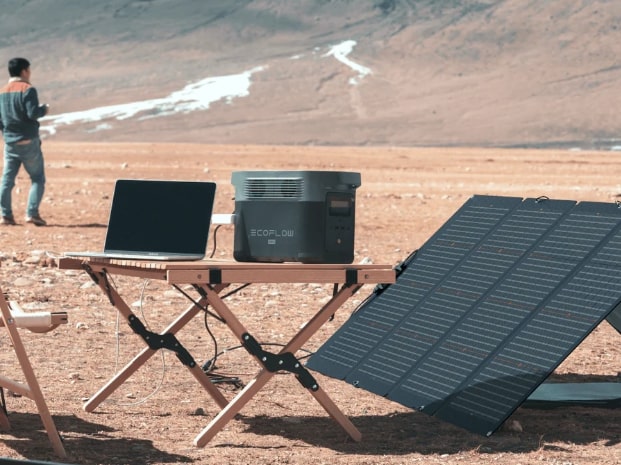Table of Contents
ToggleCloudy weather can raise concerns about solar panel efficiency. When the sky is overcast, you might wonder how it impacts your energy production. Understanding how solar panels perform in such conditions is crucial for optimizing their functionality and making the most of your investment. Whether you live in a region with frequent cloudy weather or simply want to know how solar power works during overcast conditions, gaining insight into the relationship between solar energy generation and cloud cover can help you better plan your energy system.In many places around the world, especially in temperate or coastal regions, cloudy days are more common than sunny ones. Despite this, solar energy is still an effective power source in these climates. Let’s take a deeper dive into how solar panels operate in cloudy weather and what you can do to enhance their performance.
Understanding Solar Panel Efficiency on Cloudy Days
The Role of Diffuse Light in Energy Generation
Solar panels rely on sunlight to generate electricity, and it’s easy to assume that their effectiveness is directly tied to the presence of clear skies. On cloudy days, direct sunlight is less available, but panels still capture energy from diffuse light. Diffuse light occurs when sunlight scatters after hitting atmospheric particles, such as water droplets or dust. This scattered light is less intense than direct sunlight, but it still contains usable energy.
Modern solar panels are designed to utilize this scattered sunlight, even though it is less intense than direct sunlight. This makes it possible to generate electricity even on overcast days. In fact, some studies suggest that solar panels can capture up to 30-40% of the energy from diffuse light, meaning that even when the sun is obscured, solar energy production is still viable.
Efficiency Variations: Cloudy vs. Sunny Days
There is a noticeable difference in energy output between sunny and cloudy days. On a bright, clear day, solar panels can operate at peak efficiency, producing the most power possible given the amount of sunlight available. On the other hand, when it’s overcast, energy production can drop significantly, often falling to 10-25% of its peak potential. This drop in output is expected, but it’s important to note that the efficiency losses are not as drastic as many might think, especially with recent advancements in solar technology.
Advancements in Solar Technology
While cloudy days present challenges, the evolution of solar panel technology has helped mitigate some of these efficiency losses. Modern solar panels are built with advanced materials and designs that optimize the capture of available light, whether it’s diffuse or direct. Innovations such as improved photovoltaic cell efficiency, anti-reflective coatings, and bifacial panels have contributed to making solar panels more resilient in less-than-ideal weather conditions. This means that your solar power system can still produce significant energy, even on cloudy days, without needing to be completely reliant on direct sunlight.
Factors Influencing Performance in Overcast Conditions
Panel Technology and Material Impact
Different solar panel technologies react differently to cloudy conditions. For instance, monocrystalline panels, known for their high efficiency, perform better under low-light situations compared to polycrystalline panels, which are typically less efficient in diffuse light. The crystalline structure of monocrystalline panels allows them to capture more light, even when sunlight is diffused by clouds or haze.
Additionally, some materials, such as amorphous silicon, are more responsive to diffuse light. These panels tend to perform better in low-light environments, including cloudy weather, as they are designed to absorb a broader spectrum of light. Consequently, the technology and materials used in the production of solar panels can significantly impact performance in overcast conditions.
Installation Angle and Orientation Considerations
The angle and orientation of your solar panels are crucial for optimizing energy capture. Ideally, panels should face south in the northern hemisphere (or north in the southern hemisphere) to maximize exposure to the sun. However, on cloudy days, the intensity and direction of light can vary significantly. A higher tilt angle can improve energy capture by positioning the panels to better receive more diffuse light.
For regions that experience frequent cloud cover, it’s also important to regularly adjust the angle of your solar panels to account for seasonal changes in the sun’s position in the sky. In some cases, solar tracking systems can be used to adjust the angle of the panels automatically. This ensures that the panels are always positioned for maximum efficiency, whether the skies are clear or overcast.

Strategies to Optimize Solar Energy in Cloudy Climates
Utilizing High-Efficiency Panels and Bifacial Technology
High-efficiency panels, such as those made from monocrystalline cells, are better suited for cloudy conditions due to their superior performance in low-light environments. These panels are able to capture a greater percentage of available sunlight, even when it’s cloudy. For those looking to take it a step further, bifacial panels — which capture sunlight from both the front and back of the panel — can provide an edge. These panels can absorb more energy reflected from the ground, further compensating for the reduced availability of direct sunlight.Bifacial panels are particularly effective when installed in environments with reflective surfaces, such as snow-covered ground or light-colored roofing. These surfaces bounce sunlight onto the back of the panels, increasing their overall energy capture, even when the sky is cloudy.
Incorporating Battery Storage Solutions
Energy storage systems like batteries can be crucial in maintaining a steady energy supply during periods of cloudy weather. Batteries store excess energy produced on sunny days and provide it when the sun is obscured by clouds. This is especially beneficial for areas with frequent overcast conditions or for homeowners who want to ensure they have power during the night when solar energy production ceases.
By incorporating energy storage, you can effectively balance fluctuations in solar power generation and ensure a consistent supply of electricity throughout the day. This also reduces your reliance on the grid, making your solar energy system more self-sufficient and cost-effective over time.
Conclusion
Maximizing solar panel efficiency on cloudy days involves understanding the role of diffuse light, choosing suitable technology, and optimizing installation setup. While cloudy weather does reduce the amount of energy solar panels can generate, modern technology has significantly improved their ability to perform in these conditions.Choosing high-efficiency panels, optimizing installation angles, and incorporating battery storage solutions can all help maintain consistent energy production, regardless of the weather. By implementing these strategies, you can ensure that your solar energy system remains a reliable power source, even when the skies are overcast. Solar energy continues to be a viable and sustainable energy option for homeowners and businesses alike, no matter what the weather brings.











